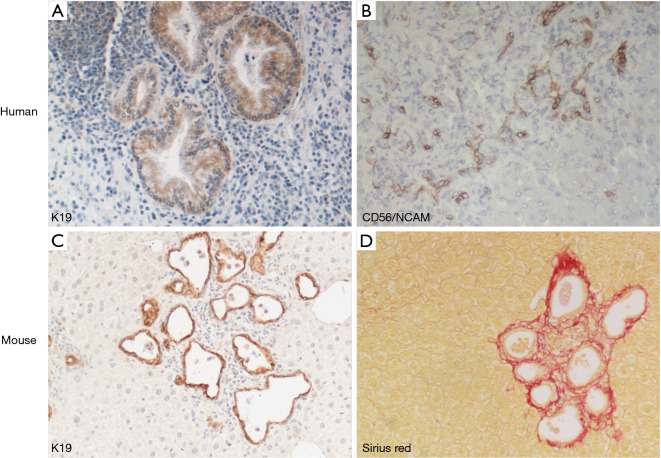Figure 4.
Liver phenotype in FLD, in human and experimental mouse model. Dysgenetic bile ducts immunoreactive for K19 develop a cyst-like configuration in enlarged portal tracts containing an abundant inflammatory cell infiltrate (A, ×20). They are accompanied by ductal plate remnants expressing CD56/NCAM (neural cell adhesion molecule) mostly localized at the portal tract margins (B, ×10). These features are phenocopied by the Pkhd1del4/del4 mouse, where microhamartomas and biliary cysts expressing K19 (C, ×10) are tightly surrounded by extensive peribiliary fibrosis confined to the portal area, as shown by histochemical staining for Sirius Red (D, ×10).

